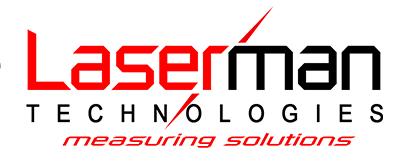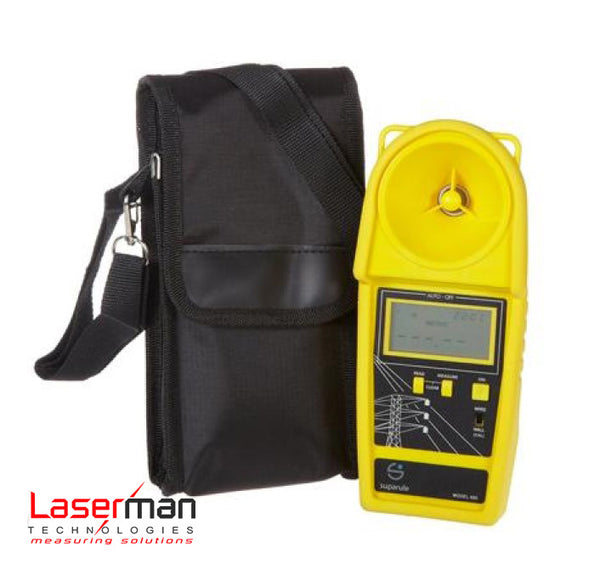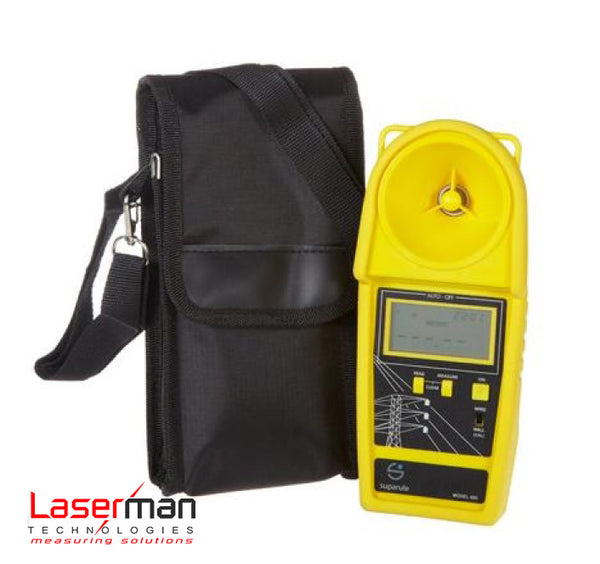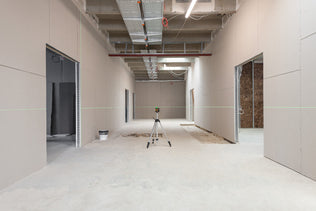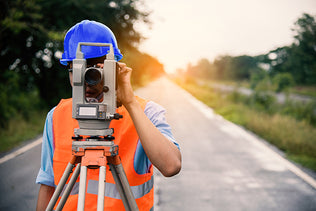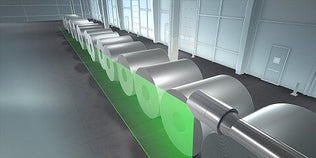The laser classification categorize laser sources according to their ability to produce damage to the human eye. Z-LASER validates and tests each laser source according the DIN standard 60825-1. The test setup simulates the structure of a human eye at complete darkness.
Using a multiaxial setup, the laser beam profile is sent through a standardized whole of 7mm diameter. The passed light is collimated and the power measured. The maximum power measured through this setup defines the laser class according to the intensity limits defined in the DIN standard.
The laser classes in accordance with DIN EN 60825-1 / 11.01
Z-LASER manufactures its products in accordance with international standards and declares the laser classes of its products in accordance with EN 60825-1, IEC 825-1 and 21 CFR 1040. The laser class can be found on the yellow / black / white / red (USA) warning sticker on each laser or on its firmly secured dimming device.
The safety measures pertaining to the applicable laser class must be strictly adhered to (see UVVs and standards).
This warning sticker should never be removed!
Laser Class 1
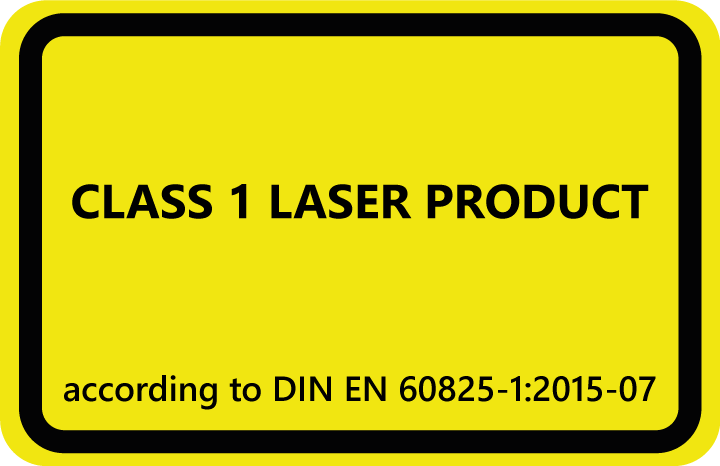
Danger Level

The accessible laser radiation is harmless under foreseeable conditions.
Notes:
Foreseeable conditions are prepared for during normal operation. The limit value of accessible radiation in accordance with DIN EN 60825-1: 2001-11 in the wavelength range 400 nm to 1400 nm for the classification of lasers is the same between 100 s and 30,000 s.
Laser Class 1M
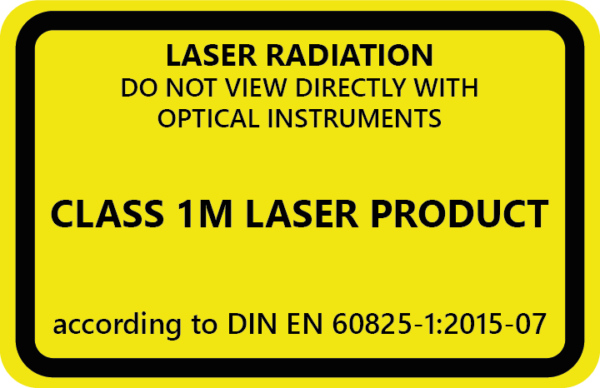
Danger Level

The accessible laser radiation is in the visible spectral range of 400 nm to 700 nm. Short periods of exposure (up to 0.25s) are not dangerous to the eye, as long as the laser cross-section is not reduced by optical instruments (magnifying glasses, lenses, telescopes)! Additional radiation components outside the wavelength range of 400-700 nm fulfill the conditions for class 1M.
Notes:
Unless optical instruments are used which reduce the beam cross-section, there is a comparable hazard for class 2M laser equipment as for class 2 laser equipment.
When using optical collecting instruments, similar hazards can occur as with class 3R or 3B.
Laser Class 2
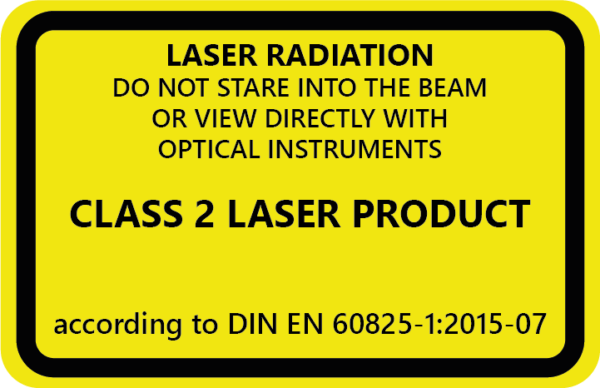
Danger Level

The accessible laser radiation is only in the visible spectral range (400 nm to 700 nm). It is harmless to the eye for a short exposure time (up to 0.25 s). The eye is protected by the eyelid closure reflex when looking into the laser radiation for a short time. For continuous beam lasers of class 2, the limit value of accessible radiation (GZS) is 1 mW (for C6 equals 1).
Security measures
Class 2 laser devices may be used without further protective measures, provided that it is ensured that it is neither possible to look into the laser radiation intentionally for longer than 0.25 s nor to look repeatedly into the laser radiation or directly reflected laser radiation.
In the case of Class 2 laser equipment, there is generally no laser area requiring additional safety measures if the operation of such laser equipment allows only accidental irradiation of persons.
Laser Class 2M
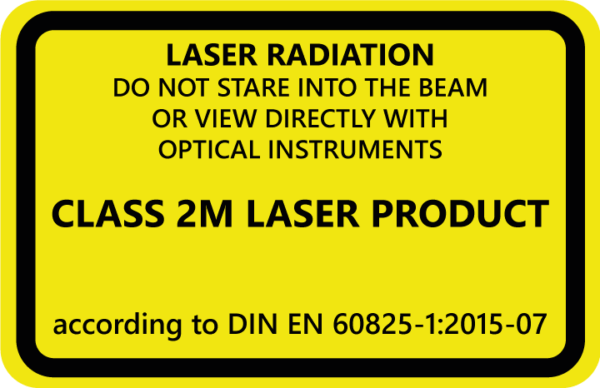
Danger Level

The accessible laser radiation is only in the visible spectral range (400 nm to 700 nm). It is harmless to the eye for a short exposure time (up to 0.25 s), which is protected by the eyelid closure reflex when looking into the laser radiation for a short time at random. For continuous beam lasers of class 2M, the limit value of accessible radiation (GZS) is 1 mW (for C6 equals 1).
Safety measures
Class 2M laser devices may be used without further protective measures if it is ensured that it is neither possible to look into the laser radiation intentionally for longer than 0.25 s nor to look repeatedly into the laser radiation or directly reflected laser radiation.
In addition, it must be ensured that no optical collecting instruments are used in the area of projection.
In the case of Class 2M laser equipment, there is generally no laser area requiring additional protection if only random irradiation of persons is possible when operating this laser equipment and no optically collecting instruments are used.
Laser Class 3R
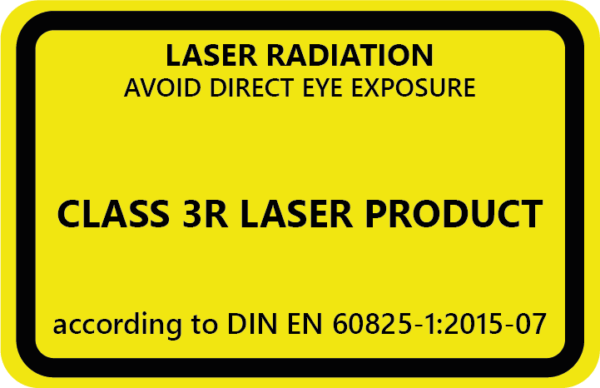
Danger Level

Laser class 3R devices are potentially dangerous to the eyes. The risk of eye damage is reduced by the limit value of the maximum accessible radiation (GZS) of:
5 times the limit value of laser class 2 in the visible wavelength range
5 times the limit value of laser class 1 in the remaining wavelength range
For class 3R continuous beam lasers, the limit of accessible radiation (GZS) is 5 mW (for C6 equal to 1) in the visible wavelength range.
Safety measures
For laser class 3R and higher, a laser safety officer must be appointed!
Courses for laser safety officers are offered in Germany by the TÜV, professional associations or similar institutions.
Accidental reflections must be avoided. Beam indicators, interlock and key switch are not required in the visible wavelength range. No special requirements regarding eye protection devices and protective clothing are necessary. Operating and maintenance personnel must be trained in handling laser equipment.
Laser Class 3B
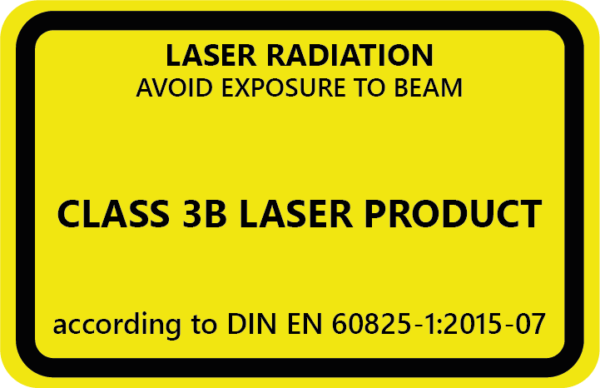
Danger Level

Laser class 3B is dangerous for the eyes and potentially also for the skin. Persons must not be exposed to the laser beam. Diffusely scattered laser radiation is not dangerous as long as the viewing distance of 13 cm and a viewing time of less than 10 s is guaranteed. There is a fire hazard if the laser beam comes into contact with flammable materials.
The limit value of the maximum accessible radiation (GZS) is 500mW.
Safety measures
When setting up and working within the working range of the laser beam, suitable protective clothing, laser safety glasses and gloves must be worn. The working range of the laser beam must be indicated by suitable warning signs.
Laser equipment must be protected against unauthorized use. An additional visual warning lamp “Laser in operation” must be used to signal when the laser is switched on. The warning lamp must be clearly visible even from a greater distance. The laser beam must not scatter outside the intended working area. There must be no reflective surfaces in the working area.
Laser Class 4
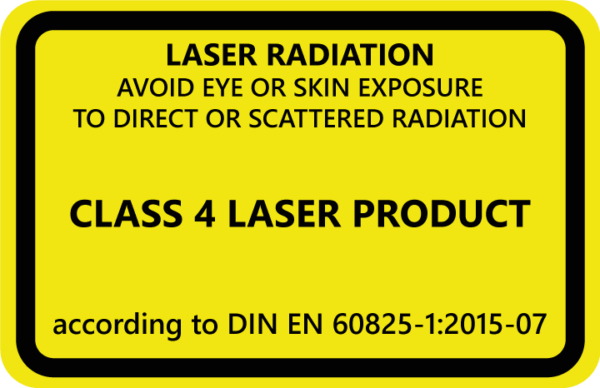
Danger Level

The accessible laser radiation is very dangerous for the eye and dangerous for the skin. Diffuse scattered radiation can also be dangerous. The laser radiation can cause fire and explosion hazards.
Security measures
The accessible laser radiation is very dangerous for the eye and dangerous for the skin. Diffuse scattered radiation can also be dangerous. The laser radiation can cause fire and explosion hazards.
Note: Class 4 laser devices are high-power lasers whose output powers or energies exceed the limits for accessible radiation (GZS) for Class 3B.
The laser radiation from Class 4 laser devices is so intense that damage to the eyes or skin is to be expected from any type of exposure. If necessary, secure access to the room by sluices or door contacts (laser shut down) if the degree of danger so requires.
In addition, when using class 4 laser equipment, it must always be checked whether sufficient measures against fire and explosion hazards have been taken; see also § 10 Laser radiation (previously: BGV B2) and § 16 Laser radiation (previously: BGV B2) of the accident prevention regulation Laser radiation.

